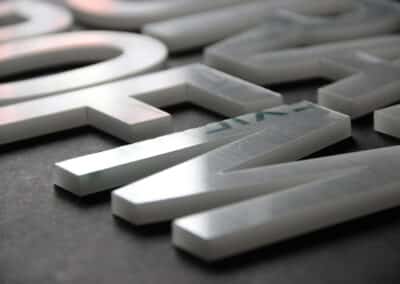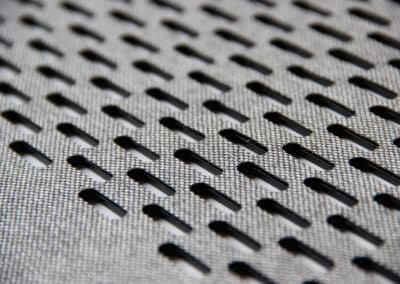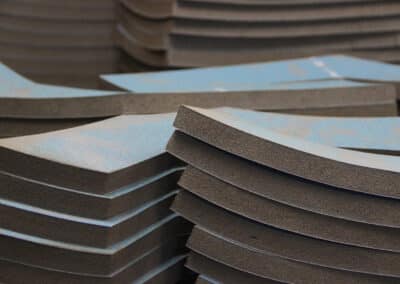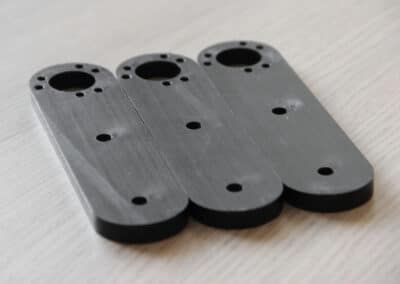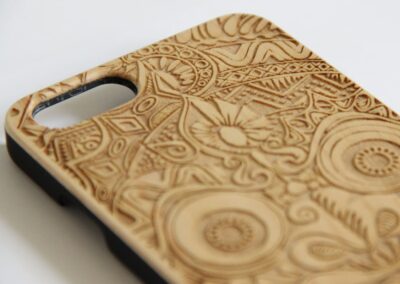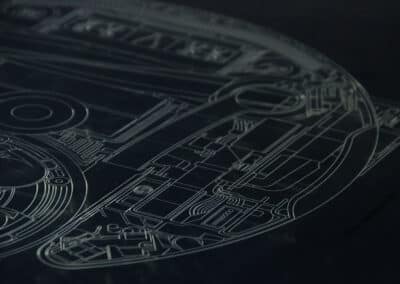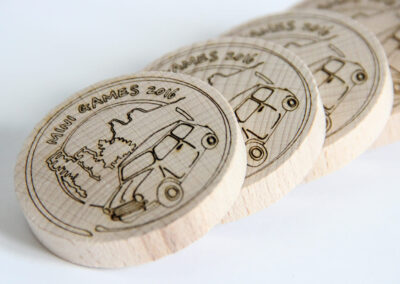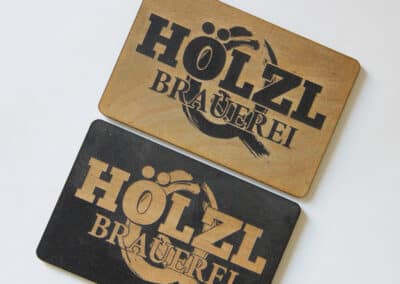Laser cuts offer unmatched precision, high speed, and perfect edge quality. The kerf width is only 0.1 mm, and there are virtually no limitations on the complexity of cuts.
No chips or debris are produced during processing, eliminating the need for tool replacement or sharpening. Accuracy and repeatability are measured in micrometers, ensuring reliable production even for the most demanding projects.
With dynamics exceeding 3G, production times are significantly reduced, especially for complex shapes. Our lasers achieve cutting speeds of over 3 meters per second – that’s 180 meters per minute, more than 10 kilometers per hour, and over 80 kilometers in a single shift.
Textile Cutting
Laser systems enable precise and efficient cutting of a wide range of fabrics – from standard textiles and laminates to highly durable technical fabrics, such as aramid materials used for protective clothing.
With automatic unwinding and specialized conveyors, the entire process runs smoothly and efficiently, increasing productivity without the need for additional staff. The modular design also allows for easy installation, even in space-constrained workshops.
Die and Mold Production
Wooden boards and other suitable materials for producing dies and molds are also best cut with a laser. Perfect perpendicularity of the kerf and precise cuts significantly simplify knife assembly, speeding up production and reducing costs. The systems support CAD file import and, with features like autofocus and propal, offer flexible and efficient solutions even for complex shapes.
Composite Material Cutting
Carbon fibers and composite materials are among the most challenging to process, but lasers handle them with high precision and finesse. They can be integrated into robotic lines, enabling fast production of complex components with minimal material waste.
Filter and Industrial Component Production
Filter fabrics, membranes, and other materials for HVAC systems can be cut and perforated using lasers. Automation of the entire process ensures high-quality parts, increased productivity, and reduced labor costs.
Creative and Design Applications
Lasers are also used in creative industries for producing decorations, personalized products, and design components. They allow precise engraving, cutting, and perforation, opening new possibilities for innovative and unique products.
Laser marking does not remove material but changes its optical properties – for example, color or texture.
This preserves the mechanical properties of the product, and the marking is permanent, as the change occurs within the material itself.
The technology allows extremely precise depiction of fine details or large amounts of information, even on a small surface. For smaller formats, scanning head systems are typically used, but we can also integrate marking into production lines and develop software tailored to specific applications. And if you need to mark areas measuring several meters, we are among the few who can do it quickly and accurately.
Laser engraving is a technology in which material is removed from the surface.
This allows the creation of even the finest details, embossed motifs, or 3D patterns – for example, a relief photograph. Engraving is used in the production of stamps, seals, molds, as well as artistic and commemorative items.
Unlike mechanical engraving, resolution is not limited by tool diameter, and depth can be precisely controlled by software. The result is precise, durable, and visually impressive.
